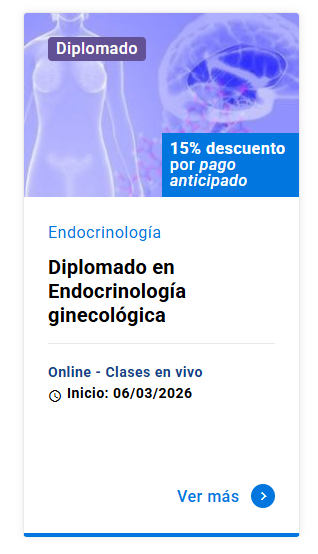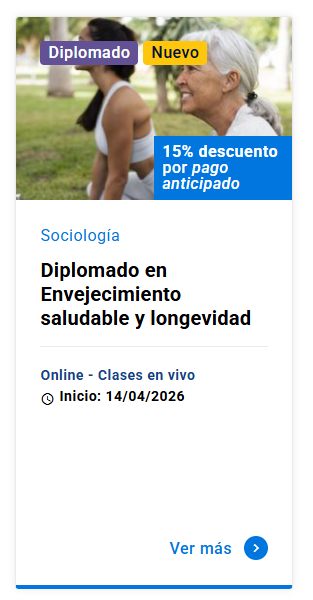Toxicidad sistémica por anestésicos locales: consideraciones generales, prevención y manejo
DOI:
https://doi.org/10.11565/arsmed.v42i3.995Palabras clave:
efectos adversos, toxicidad, emulsiones grasas intravenosas, Toxicidad sistémicaResumen
La administración de anestésicos locales se lleva a cabo en distintos escenarios clínicos y por diferentes profesionales de la salud, principalmente, médicos y odontólogos. Su uso está asociado a complicaciones de baja frecuencia como edema, urticaria y dermatitis, pero la intoxicación por anestésicos locales puede ser fatal. La presentación clínica de esta complicación es muy variable y abarca un gran espectro de síntomas relacionados principalmente con la toxicidad neurológica y cardiovascular, incluyendo presentaciones atípicas. La prevención de la toxicidad sistémica se basa en considerar los factores de riesgo para su presentación, elegir cuidadosamente el anestésico local y la dosis a administrar, aspirar antes de inyectar, fraccionar la dosis y el uso de marcadores de inyección intravascular. El manejo de la intoxicación por anestésicos locales incluye un manejo de la vía aérea, control de las convulsiones, mantención de la circulación sistémica y el uso de terapia intravenosa con emulsión lipídicaDescargas
Citas
American Heart Association. (2016). Soporte Vital Cardiovascular Avanzado, Libro del Proveedor. Edición en español. Texas: Integracolor, p.171.
Albright GA. (1979). Cardiac arrest following regional anesthesia with etidocaine or bupivacaine. Anesthesiology 51, 285-287. DOI: https://doi.org/10.1097/00000542-197910000-00001
Barrington MJ, Weinberg GL & Neal JM. (2016). A call to all readers: educating all surgeons on preventing and treatment of local anaesthetic systemic toxicity. ANZ J Surg 86, 636-637. DOI: https://doi.org/10.1111/ans.13667
Becker DE & Reed KL. (2012). Local anesthetics: review of pharmacological considerations. Anesth Prog 59, 90-101; quiz 102-103. DOI: https://doi.org/10.2344/0003-3006-59.2.90
Cave G, Harrop-Griffiths W, Harvey M, Meek T, Picard J, Short T & Weinberg G (2010). Safety Guideline: Management of Severe Local Anaesthetic Toxicity. The Association of Anaesthetists of Great Britain & Ireland. (citado 7 Nov 2017). Disponible en: https://www.aagbi.org/sites/default/files/la_toxicity_2010_0.pdf
Dhir S, Ganapathy S, Lindsay P & Athwal GS. (2007). Case report: ropivacaine neurotoxicity at clinical doses in interscalene brachial plexus block. Can J Anaesth 54, 912-916. DOI: https://doi.org/10.1007/BF03026796
Di Gregorio G, Neal JM, Rosenquist RW & Weinberg GL. (2010). Clinical presentation of local anesthetic systemic toxicity: a review of published cases, 1979 to 2009. Reg Anesth Pain Med 35, 181-187. DOI: https://doi.org/10.1097/AAP.0b013e3181d2310b
Dillane D & Finucane BT. (2010). Local anesthetic systemic toxicity. Can J Anaesth 57, 368-380. DOI: https://doi.org/10.1007/s12630-010-9275-7
El-Boghdadly K & Chin KJ. (2016). Local anesthetic systemic toxicity: Continuing Professional Development. Can J Anaesth 63, 330-349. DOI: https://doi.org/10.1007/s12630-015-0564-z
Fenten MG, Rohrbach A, Wymenga AB & Stienstra R. (2014). Systemic local anesthetic toxicity after local infiltration analgesia following a polyethylene tibial insert exchange: a case report. In Reg Anesth Pain Med, pp. 264-265. United States. DOI: https://doi.org/10.1097/AAP.0000000000000077
Guay J. (2006). The epidural test dose: a review. Anesth Analg 102, 921-929. DOI: https://doi.org/10.1213/01.ane.0000196687.88590.6b
Heavner JE. (2007). Local anesthetics. Curr Opin Anaesthesiol 20, 336-342. DOI: https://doi.org/10.1097/ACO.0b013e3281c10a08
Heavner JE, Dryden CF, Jr., Sanghani V, Huemer G, Bessire A & Badgwell JM. (1992). Severe hypoxia enhances central nervous system and cardiovascular toxicity of bupivacaine in lightly anesthetized pigs. Anesthesiology 77, 142-147. DOI: https://doi.org/10.1097/00000542-199207000-00020
Lui KC & Chow YF. (2010). Safe use of local anaesthetics: prevention and management of systemic toxicity. Hong Kong medical journal = Xianggang yi xue za zhi 16, 470-475.
Merchant R, Chartrand D, Dain S, Dobson G, Kurrek MM, Lagace A, Stacey S & Thiessen B. (2015). Guidelines to the practice of anesthesia--revised edition 2015. Can J Anaesth 62, 54-67. DOI: https://doi.org/10.1007/s12630-014-0232-8
Meunier JF, Goujard E, Dubousset AM, Samii K & Mazoit JX. (2001). Pharmacokinetics of bupivacaine after continuous epidural infusion in infants with and without biliary atresia. Anesthesiology 95, 87-95. DOI: https://doi.org/10.1097/00000542-200107000-00018
Mirtallo JM, Dasta JF, Kleinschmidt KC & Varon J. (2010). State of the art review: Intravenous fat emulsions: Current applications, safety profile, and clinical implications. Ann Pharmacother 44, 688-700. DOI: https://doi.org/10.1345/aph.1M626
Mulroy MF & Hejtmanek MR. (2010). Prevention of local anesthetic systemic toxicity. Reg Anesth Pain Med 35, 177-180. DOI: https://doi.org/10.1097/AAP.0b013e3181d26068
Neal JM, Bernards CM, Butterworth JFt, Di Gregorio G, Drasner K, Hejtmanek MR, Mulroy MF, Rosenquist RW & Weinberg GL. (2010). ASRA practice advisory on local anesthetic systemic toxicity. Reg Anesth Pain Med 35, 152-161. DOI: https://doi.org/10.1097/AAP.0b013e3181d22fcd
Neal JM, Mulroy MF & Weinberg GL. (2012). American Society of Regional Anesthesia and Pain Medicine checklist for managing local anesthetic systemic toxicity: 2012 version. Reg Anesth Pain Med 37, 16-18. DOI: https://doi.org/10.1097/AAP.0b013e31822e0d8a
Ozcan MS & Weinberg G. (2014). Intravenous lipid emulsion for the treatment of drug toxicity. J Intensive Care Med 29, 59-70. DOI: https://doi.org/10.1177/0885066612445978
Pere P, Salonen M, Jokinen M, Rosenberg PH, Neuvonen PJ & Haasio J. (2003). Pharmacokinetics of ropivacaine in uremic and nonuremic patients after axillary brachial plexus block. Anesth Analg 96, 563-569, table of contents. DOI: https://doi.org/10.1213/00000539-200302000-00048
Picard J & Meek T. (2006). Lipid emulsion to treat overdose of local anaesthetic: the gift of the glob. In Anaesthesia, pp. 107-109. England. DOI: https://doi.org/10.1111/j.1365-2044.2005.04494.x
Pong RP, Bernards CM, Hejtmanek MR, Slee AE & Batra MS. (2013). Effect of chronic beta-blockade on the utility of an epinephrine-containing test dose to detect intravascular injection in nonsedated patients. Reg Anesth Pain Med 38, 403-408. DOI: https://doi.org/10.1097/AAP.0b013e31829bb9fa
Prentiss JE. (1979). Cardiac arrest following caudal anesthesia. Anesthesiology 50, 51-53. DOI: https://doi.org/10.1097/00000542-197901000-00012
Robards C, Clendenen S & Greengrass R. (2008). Intravascular injection during ultrasound-guided axillary block: negative aspiration can be misleading. Anesth Analg 107, 1754-1755. DOI: https://doi.org/10.1213/ane.0b013e31818454ec
Rosenberg PH, Veering BT & Urmey WF. (2004). Maximum recommended doses of local anesthetics: a multifactorial concept. Reg Anesth Pain Med 29, 564-575; discussion 524. DOI: https://doi.org/10.1016/j.rapm.2004.08.003
Santos AC & DeArmas PI. (2001). Systemic toxicity of levobupivacaine, bupivacaine, and ropivacaine during continuous intravenous infusion to nonpregnant and pregnant ewes. Anesthesiology 95, 1256-1264. DOI: https://doi.org/10.1097/00000542-200111000-00033
Tsen LC, Tarshis J, Denson DD, Osathanondh R, Datta S & Bader AM. (1999). Measurements of maternal protein binding of bupivacaine throughout pregnancy. Anesth Analg 89, 965-968. DOI: https://doi.org/10.1213/00000539-199910000-00027
Vasques F, Behr AU, Weinberg G, Ori C & Di Gregorio G. (2015). A Review of Local Anesthetic Systemic Toxicity Cases Since Publication of the American Society of Regional Anesthesia Recommendations: To Whom It May Concern. Reg Anesth Pain Med 40, 698-705. DOI: https://doi.org/10.1097/AAP.0000000000000320
Weinberg GL. (2002). Current concepts in resuscitation of patients with local anesthetic cardiac toxicity. Reg Anesth Pain Med 27, 568-575. DOI: https://doi.org/10.1053/rapm.2002.37126
Weinberg GL. (2008). Lipid infusion therapy: translation to clinical practice. Anesth Analg 106, 1340-1342. DOI: https://doi.org/10.1213/ane.0b013e31816a6c09
Weinberg GL. (2010). Treatment of local anesthetic systemic toxicity (LAST). Reg Anesth Pain Med 35, 188-193. DOI: https://doi.org/10.1097/AAP.0b013e3181d246c3
Weiss E, Jolly C, Dumoulin JL, Meftah RB, Blanie P, Laloe PA, Tabary N, Fischler M & Le Guen M. (2014). Convulsions in 2 patients after bilateral ultrasound-guided transversus abdominis plane blocks for cesarean analgesia. Reg Anesth Pain Med 39, 248-251. DOI: https://doi.org/10.1097/AAP.0000000000000088
Publicado
Cómo citar
Licencia
Derechos de autor 2017 ARS MEDICA Revista de Ciencias Médicas

Esta obra está bajo una licencia internacional Creative Commons Atribución-CompartirIgual 4.0.
Los autores/as conservan sus derechos de autor y garantizan a la revista el derecho de primera publicación de su obra, la que estará simultáneamente sujeta a la Licencia CC BY-SA 4.0 (Ver declaración de Acceso Abierto).







